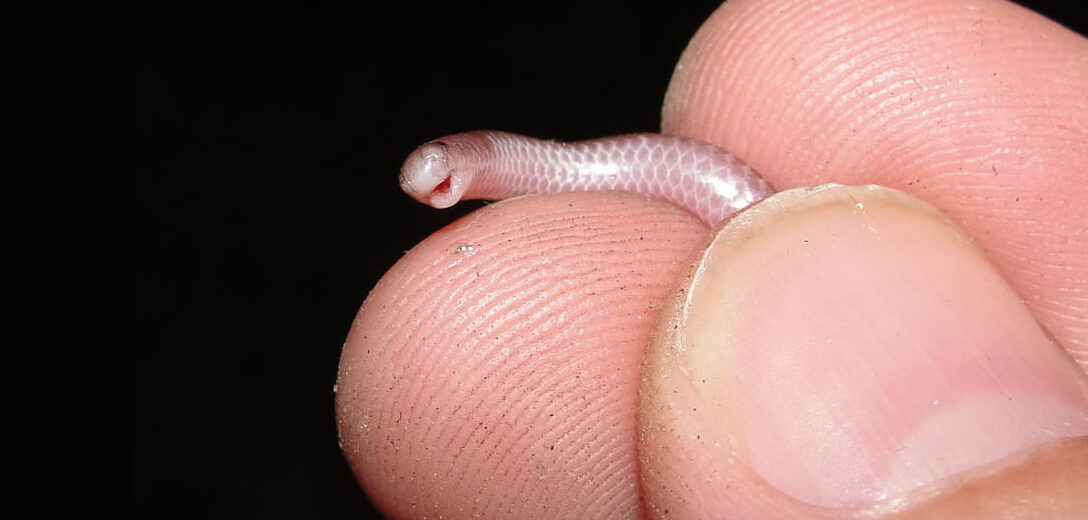
This article is devoted to one of the world’s smallest known snake species, the southwestern threadsnake. This fossorial (burrowing) snake has many alternate names as well, names like Leptotyphlopidae, leptotyphlopid, wormsnakes, blind snake, brown blind snake, California blind snake, California rena, California worm snake, Cedros island worm snake, sheep-nosed snake, and slender blind snake. These tiny critters typically don’t get any larger than 16 inches in length. Also, these cute little stinkers have kind of a “derp” face as they have a countersunk jaw and tiny eyes. Southwestern species of threadsnakes call California, Nevada, Arizona, Utah, New Mexico, Texas, Baja California, and Mexico their home. This species prefers brushy mountain slopes, rocky hillsides, washes near streams, deserts, and sandy beach locations. This article is on special request from Ellen.
First the Stats…
Scientific name: Leptotyphlopidae
Weight: Up to 1 ounce
Length: Up to 16 inches
Lifespan: Unknown
Now on to the Facts!
1.) The Barbados threadsnake (Tetracheilostoma carlae) can sit, slightly curled up, on top of a 25¢ coin! That’s how small this species can get.
2.) Their eyes are just partially functional dark spots visible under translucent plates. As they burrow and spend most of their time underground, they have little need for vision. They prefer to rely on their tongue to “smell” their prey (using their Jacobson’s organ – an organ in the top of their mouth that “tastes” airborne molecules and gives the animal readings of their environment) and vibrations to sense predators.
3.) In California and Hawaii, the southwestern threadsnake is often mistaken for a brahminy blindsnake (Ramphotyphlops braminus). The blindsnake is much smaller though (up to 7 inches as an adult).
4.) These snakes are nocturnal (active at night) and spend their days burrowed in soft soil and under leaf litter or debris.
5.) When threatened, the threadsnake releases a pungent fluid from their cloaca. It not only stinks but remains on your skin until thoroughly washed. A standard soap and water washing wont get this stink off you. Trust me, I know.
But wait, there’s more on the southwestern threadsnake!
6.) The method of hunting is to trace ants and termites to their burrows and slither down the tunnels, eating up their prey as they go. Their diminutive girth allows them the opportunity to easily navigate said tunnels.
7.) Wormsnakes eat ants and termites, as well as their larvae and pupae, and occasionally other small insects and their larvae.
Did you know…?
The tail is tipped with a small spine which can be used to poke predators but it isn’t venomous.
8.) They mate in spring and the female lays her elongated eggs, which are about the size of an long grain of rice, from July – August.
Now a Short Southwestern Threadsnake Video!
Also, check out the Critter Science YouTube channel. Videos added frequently!
Want to suggest a critter for me to write about? Let me know here.




Loved the info for the skinny pink snake that my chicken dug up The chicken was running around with it in her beak…I couldn’t see it well, so this article was wonderful 😊. We live in West DeLand,FL,USA
GG
Thank you for the kudos!